“With Every Stitch,” Ensign, Mar. 2004, 32
With Every Stitch
For some time prior to the 20th century, the education of most middle and upper class young women in England and America focused almost exclusively on domestic skills and the arts. Skill at embroidery was considered essential. As part of the learning process, young women created samples of all the embroidery stitches and motifs they would need to know to beautify clothing and home furnishings. Samplers were evidence that a young woman had attained a certain level of skill. Thus a “sampler” became a combined reference point and exercise sheet to indicate that skill.
Today many women around the world still find great pleasure and expression in the creation of decorative needle crafts. A resurgent interest in high quality needlework reminiscent of the earlier sampler tradition has led many contemporary designers to create beautiful new pieces of art.
Following are examples of historic and contemporary needlework gathered by the Museum of Church History and Art. They embody core values of faith, family, and industry. Some include family genealogy. All are family treasures handed down from mother to daughter as a reminder of family unity and love.

A Sower Went Out to Sow, 1988, by Katharina Bulla, stitched in the Germanic needlework tradition.
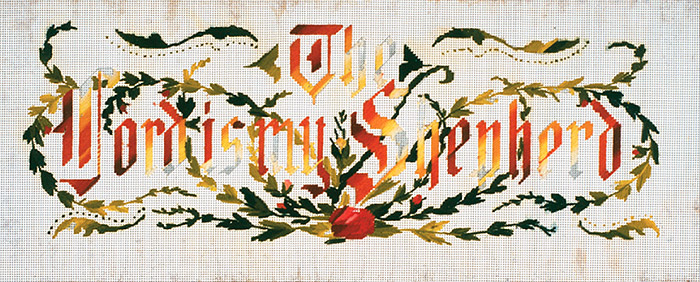
The Lord Is My Shepherd, by an unknown maker.

Mother’s Sampler, about 1815, by convert Elizabeth Hesketh [Liptrot]. After Elizabeth died, her daughter Grace took her own sampler and her mother’s treasured sampler to Zion. Strawberries in the border represent the perfect fruit because they have no pit or peel.
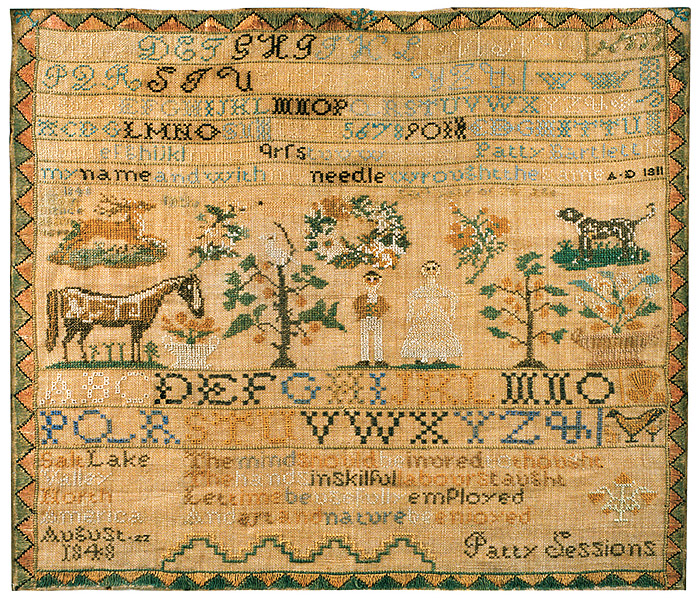
From Maine to Utah, 1811 and 1848, by Patty Bartlett Sessions. Patty started this sampler at age 16 in Bethel, Maine. She completed it in August 1848 at age 53, after arriving in the Salt Lake Valley. A beloved midwife, Patty Sessions filled her sampler with pictures of animals as well as numbers, an alphabet, and verse.
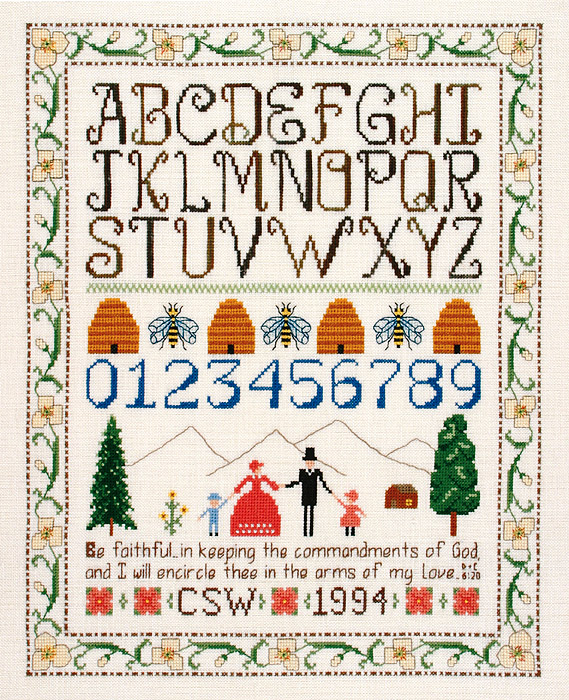
Utah Sampler, 1994, by Carolyn Standing Webb. Consistent with early samplers, this modern example includes an alphabet and a scriptural verse. Symbolic Utah motifs include the roses at the bottom representing the biblical prophecy that the desert shall blossom as a rose, the Lombardy poplar tree, sunflowers, a log cabin, bees, and beehives. Surrounding the body of this sampler is a border of sego lilies, the Utah state flower. Notice the mountain range and the family dressed in pioneer clothing.

Nauvoo Temple Sampler, Historic Reproduction, 1986–87, 1989, by William H. Ormond and Mindy Chisholm. This work is a reproduction of two nearly identical samplers originally made in England about 1850.

In Our Lovely Deseret, 1990, by Elaine Thatcher. Deseret is a Book of Mormon word that means “honeybee.” President Brigham Young taught that everyone should be as “busy as a bee” in doing good works. Even today Utah is known as the Beehive State.
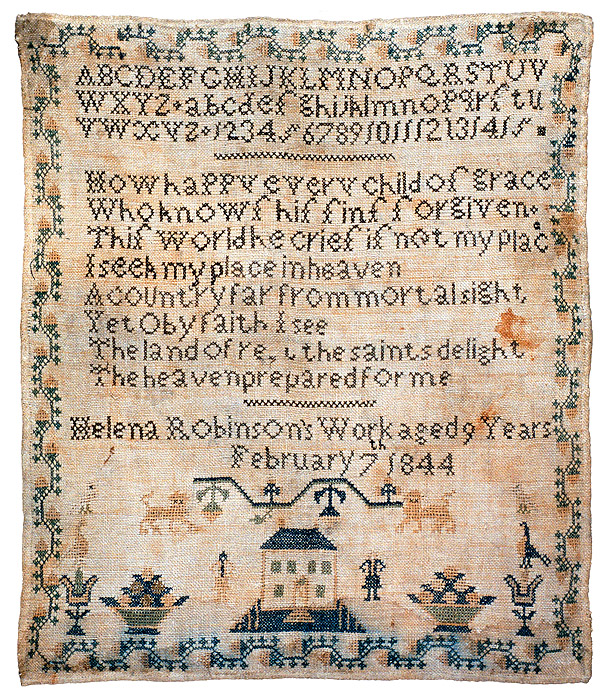
Child of Grace, 1844, by Helena Lydia Robinson [Richards]. Symbols include baskets of fruit for prosperity, lions for strength and hope, birds for the Spirit, and a house for protection. On the third line of the verse, Helena placed the “e” above “plac” to avoid unstitching the whole line. Such modifications were common.
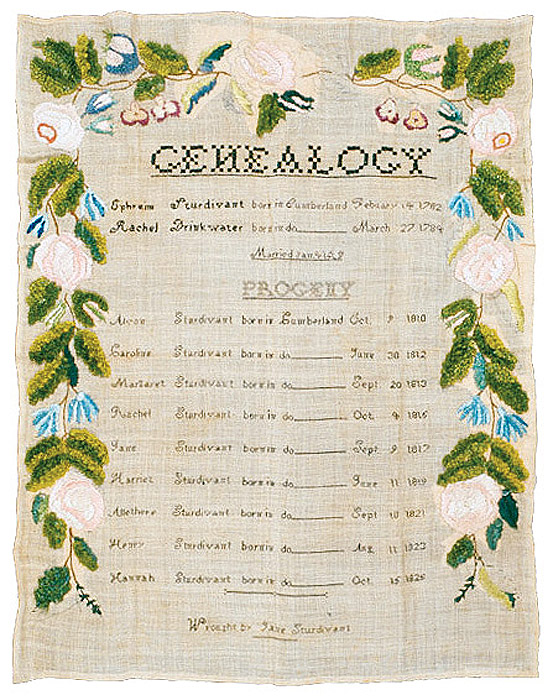
Sturdivant Family Register, about 1830, by Jane Sturdivant. Family registers became popular in the 19th century, and in many cases were the only record left of a person or family.

Minister One by One, 1985, by an unknown maker. This original needlework, which once hung in the Primary general offices, celebrates the simple idea that the best teaching occurs one-on-one.
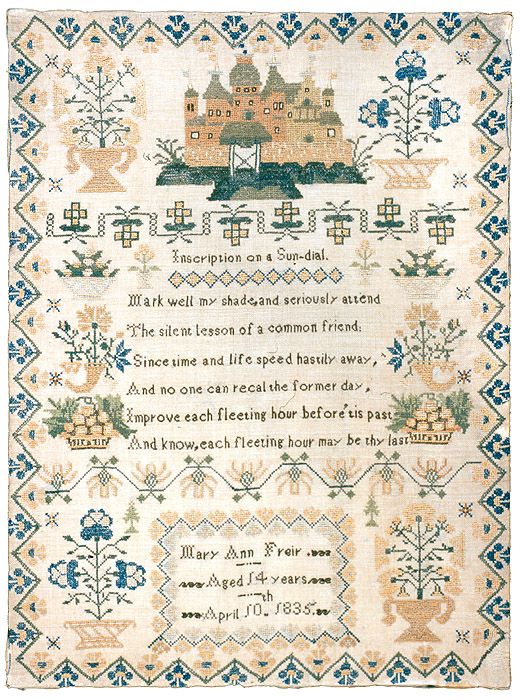
Inscription on a Sun-dial, 1835, by convert Mary Ann Freir [Smith]. Flowers in the border represent purity and protection; the castle is a symbol of a great quest, which when achieved bestows prosperity; and honeysuckle, below the verse, represents enduring faith.

Families Are Forever, 1998, by Carolyn Standing Webb.
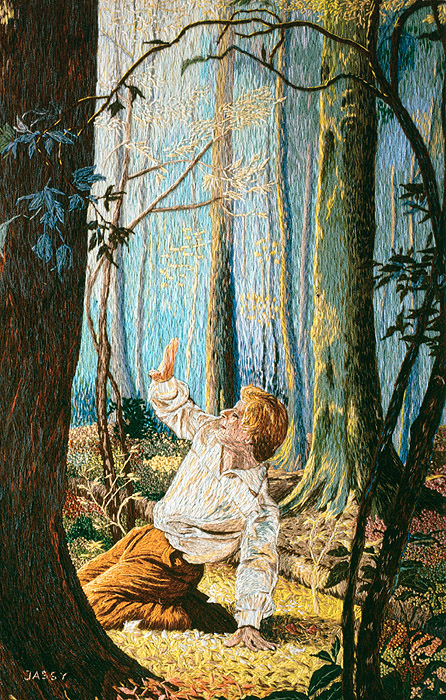
Decorative needle crafts are among the most ancient of mankind’s crafts. In virtually every culture of the world, people have decorated their possessions with needlework. Pictorial embroidery preceded oil painting by centuries. For example, Jehovah instructed Moses to build a tabernacle using fine linen curtains embroidered with cherubim. Right: The First Vision, 1990, by Jacinta R. Freire Rosales Zumaeta. In many countries, replicating well-known images seen in Church magazines and manuals is considered a compliment to the artist and is a way of embracing the Latter-day Saint tradition. This image is from a 1989 Greg K. Olsen oil painting.